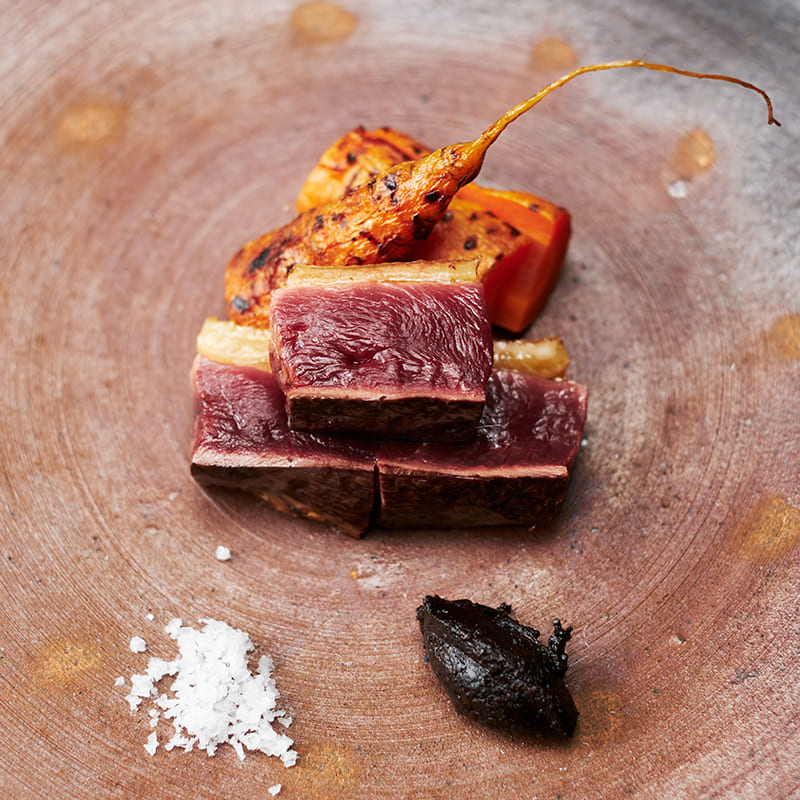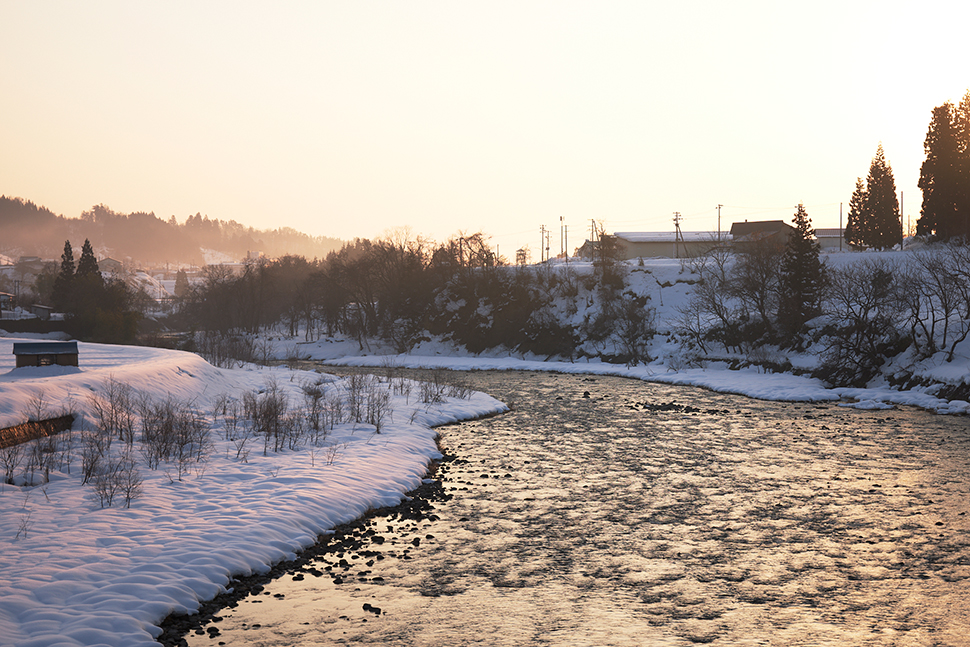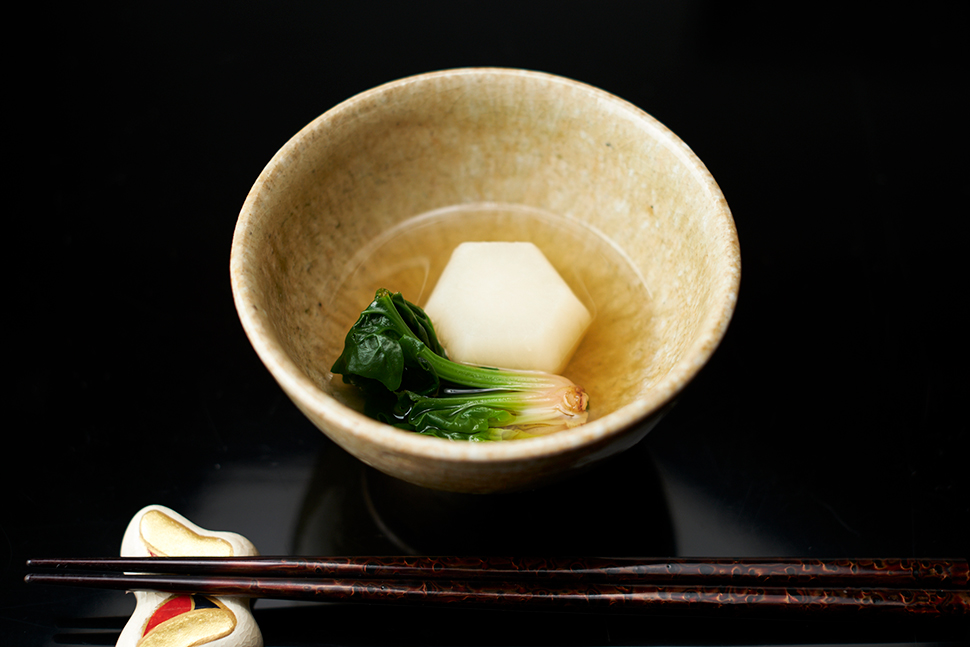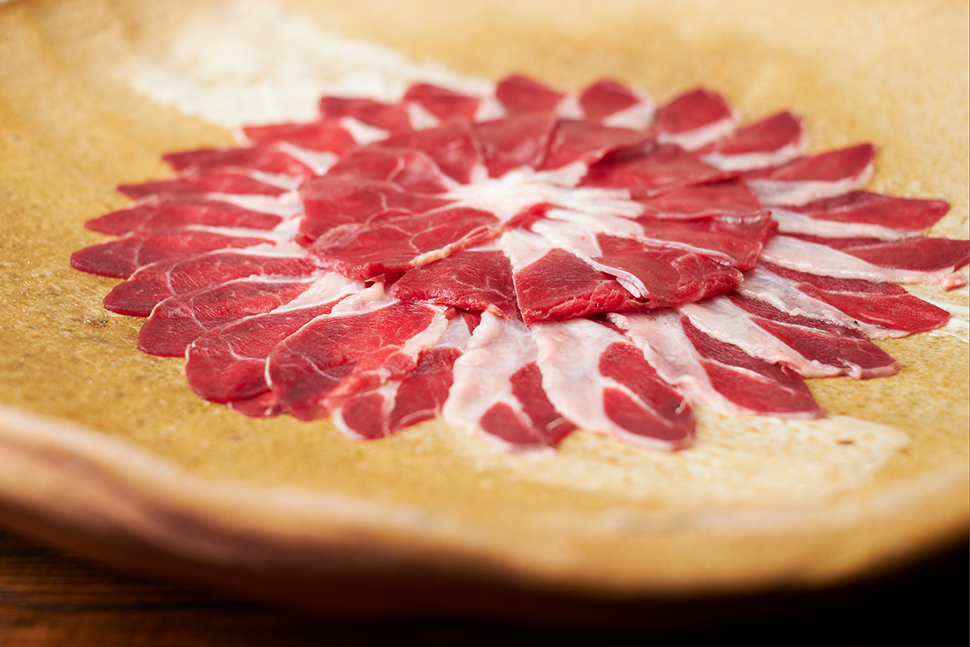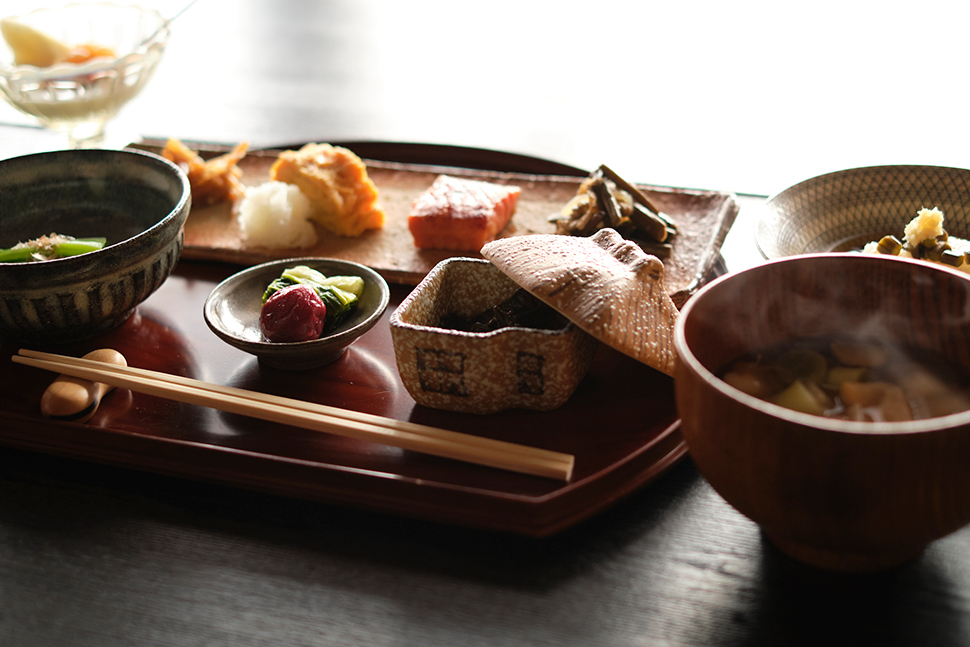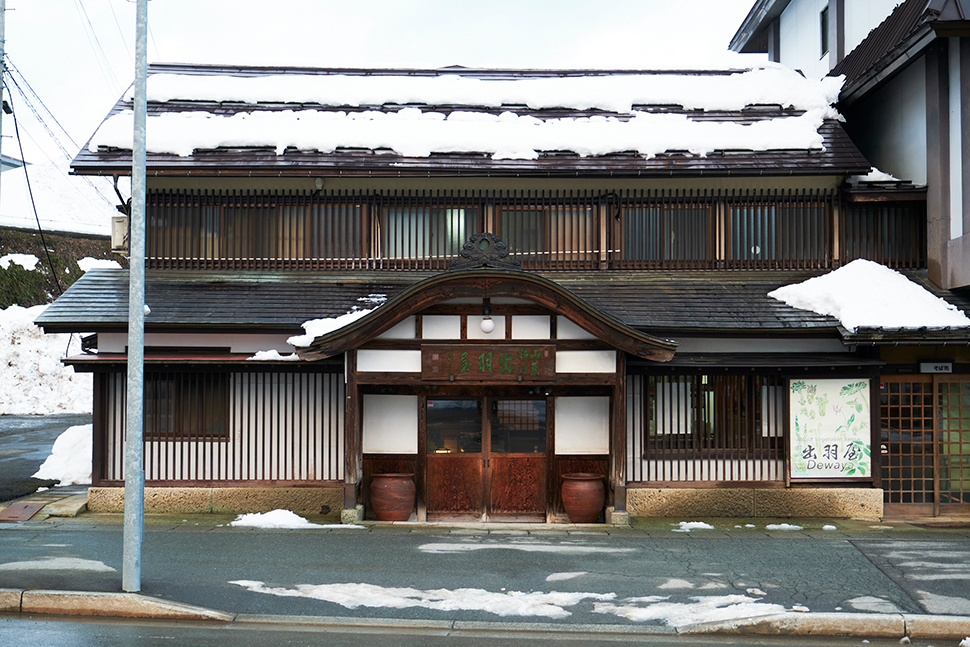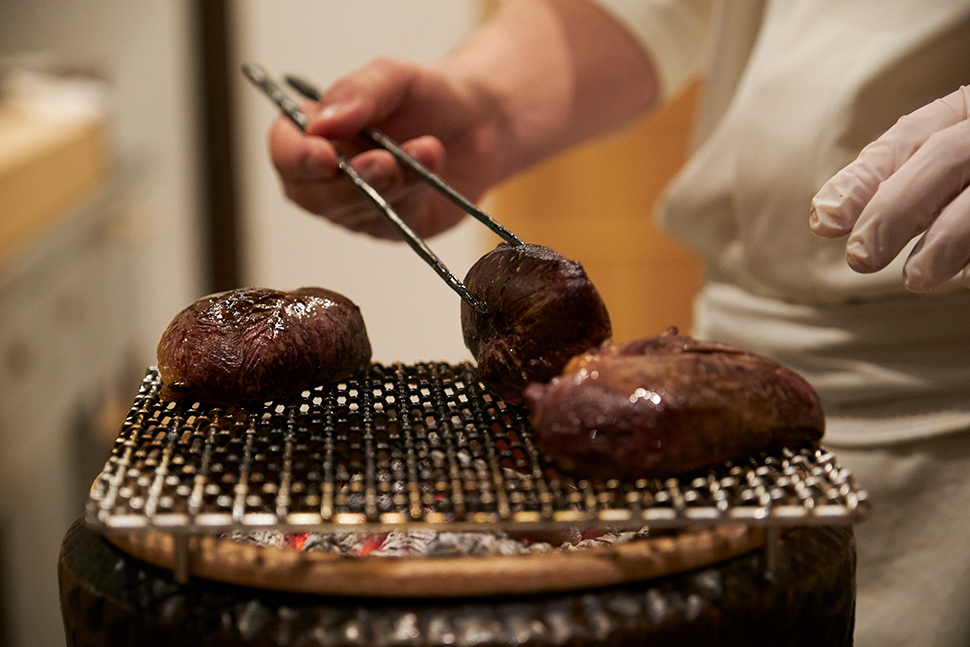DESTINATION RESTAURANTS
June 20, 2022
Dewaya
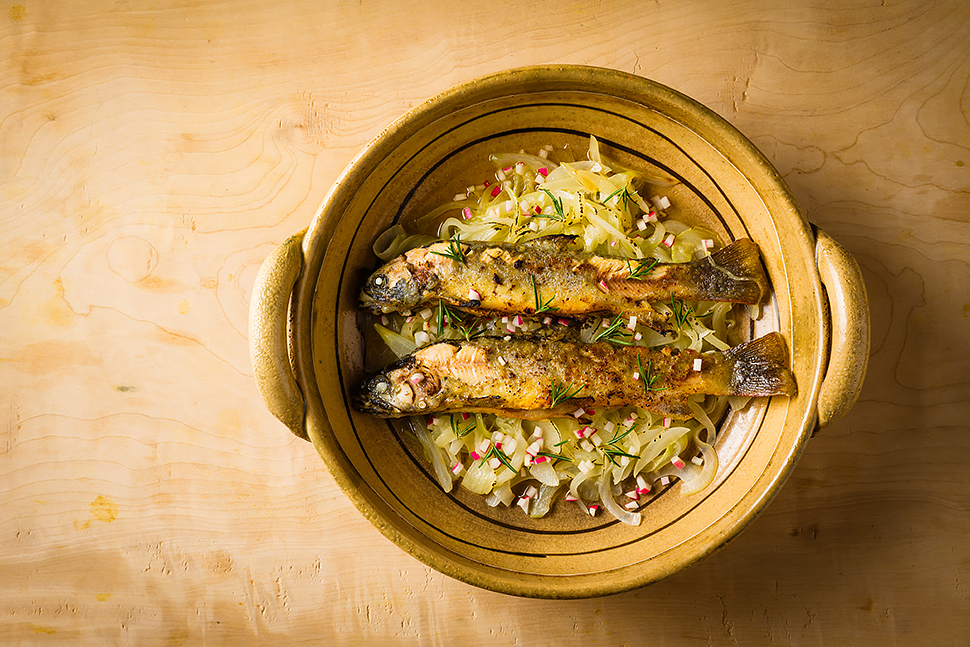
The town of Nishikawa, home to the Dewaya restaurant and inn, is about 40 minutes by car from Yamagata Station. Nestled in the foothills of the famous Mount Gassan, the town receives a lot of snow even for Japan’s snowy northern region, sometimes piling up to more than 5 meters by February. The population is just under 5,000 people. Sericulture, forestry and mining once thrived in the area but have since declined, now replaced by the tourism industry, which centers on summer hiking, spring skiing and hot springs on and around Mount Gassan.
Dewaya was established in 1918 as an inn serving ascetics traveling to the Three Mountains of Dewa — Mount Gassan, Mount Yudono and Mount Haguro — which are objects of veneration for followers of Shugendo and other mountain-worshipping religions. Haruki Sato is the fourth generation to carry on the family business, learning his trade at a high-end Japanese restaurant in Tokyo and elsewhere before returning home to Nishikawa in 2013.
“The first thing I did was build connections with traditional hunters, skilled foragers of wild vegetables and other local food producers. That strengthened my commitment to making the natural abundance of Mount Gassan and wild vegetable dishes the focus of the restaurant,” he said.
In spring, the menu features as many as 30 types of wild vegetables. In summer, guests feast on bamboo shoots picked on Mount Gassan, sweet-and-salty glazed butterbur stems, and ayu (sweetfish) and kajika (sculpin) from the rivers. In fall there are wild mushrooms and nuts, and in winter wild game makes an appearance.
Accommodation and two meals starts at ¥19,800 ($150) per night. Restaurant service alone is available starting at ¥6,600 for either lunch or dinner. The “chef’s table” package, including one night’s accommodation and two meals prepared personally by Sato, starts at ¥38,500, or ¥19,800 for one meal without accommodation. This latter option is of course popular with foodies. The literal chef’s table is a counter made of ancient zelkova wood, newly refurbished in January 2023. At the time of this interview in January, the 12-course meal included turnips and spinach grown by Sato’s brother Akina, who is the assistant chef at the restaurant. The vegetables, harvested from beneath deep snow, were incredibly sweet. The meal included many local dishes available only here, such as an unusual moss called “hermit’s mist” that grows on beech trees, served in a walnut sauce, as well as simmered pheasant and hotpot of Asiatic black bear supplied by traditional hunters.
Unlike coastal Yamagata cities such as Sakata that thrived in the Edo Period as ports of call for the Kitamaebune shipping route, Nishikawa was an impoverished mountain area until the bubble years of the 1980s. The food prepared at Dewaya draws on the knowledge of earlier generations who lived through hard times. Wild vegetables harvested in spring were dried or salted for use in winter. Because people could not afford kombu or katsuobushi (dried bonito) to make flavorful broth, they used plenty of mushrooms and wild vegetables to add umami. These are the pure flavors of local cooking, distinct from the Kyoto-style cuisine that became popular throughout Japan following World War II. It is Sato’s enduring aim to share this “flavor of the mountains” with the wider world.

